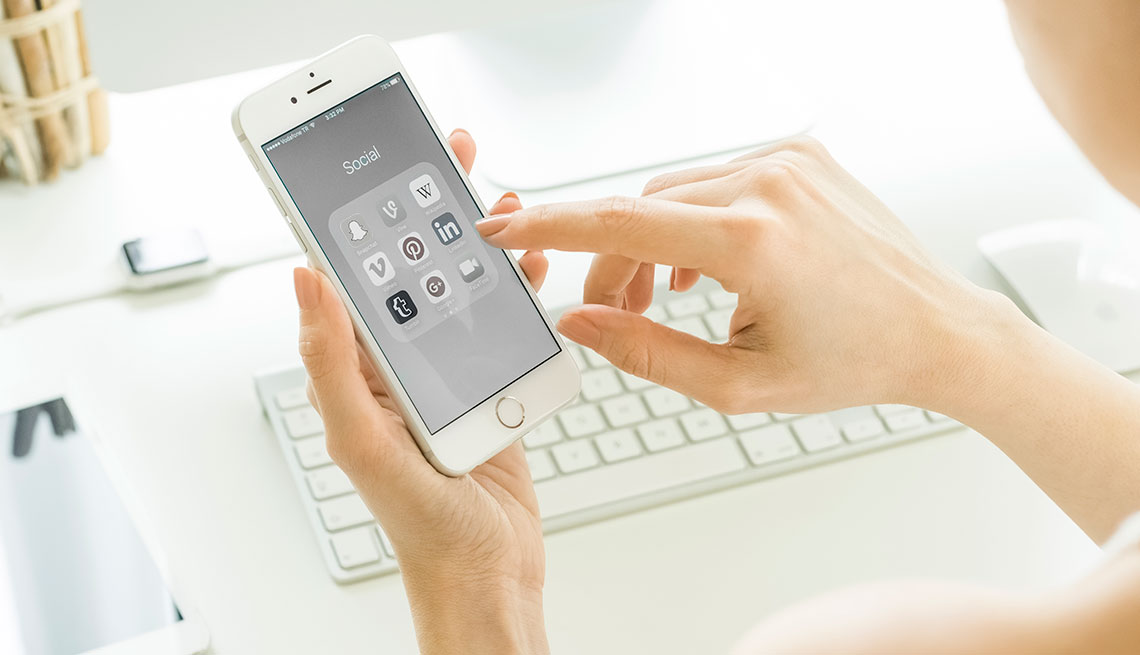
Going gray can help with smartphone addiction
- Select a language for the TTS:
- UK English Female
- UK English Male
- US English Female
- US English Male
- Australian Female
- Australian Male
- Language selected: (auto detect) - EN
Play all audios:
If you feel like you’re constantly checking your phone, there could be an easy fix: Go gray. No, that’s not fashion or hairstyle advice. It’s digital: Turning off the colors on your mobile
device is an increasingly accepted method to help tone down (literally) your smartphone and tablet hyperuse . Smartphone addiction is a hot topic these days, with one recent study showing
the average user checks his or her phone more than 100 times every day. Blame our brains, it seems: Behavioral experts say those app tiles on your phone are bright and colorful for a reason.
Each time you glance at those gleaming buttons, it stimulates your brain. If you go gray — by changing your display settings to turn your phone black-and-white — your brain won’t have as
much fun glancing at the screen. You’ll barely even realize how much you cut down on your chronic check-ins. That’s the theory, at least — and it’s supported by science. “Color’s not a
signal for detecting objects, it’s actually something much more fundamental: It’s for telling us what’s likely to be important,” National Eye Institute investigator Bevil Conway, who
researches color and emotion, recently told the New York Times. “If you have lots of color and contrast then you’re under a constant state of attentional recruitment. Your attentional system
is constantly going, ‘Look look look over here.’” Even the neuroscientist who works with Facebook to make sure its digital products and apps are eye- catchingly colorful sees merit in the
move to gray. “Color and shape, these are the icebreakers when it comes to grabbing people’s attention, and attention is the new currency,” Thomas Ramsoy told the Times, noting that app
developers deploy those bright, fun colors in their constant battle to capture the time of phone users. As an example, users might glance at their phone to check email, but that shiny
Snapchat or Instagram app tile calls out to them, and one touch later — poof! — they’re down the rabbit hole. Going gray, Ramsoy adds, helps give back to the user control of his or her
attention. Phone makers know this, however, so it’s probably not a coincidence that it can take a bit of work to navigate the maze of settings to make your screen gray. It can be done,
though: On most Android phones and devices, display settings can be changed through the Accessibility menu by setting the display to grayscale. On Apple devices, users must go to Settings
> General > Accessibility > Display Accommodations > Color Filters, and then toggle the Color Filters setting on and select Grayscale. An in-development app called Go Gray might
soon make the process easier; it includes features such as a white list for certain apps — such as for photography and maps — to display in color even as your phone is in grayscale. The
developer offers another low-tech solution to smartphone addiction: a small sticker (black-and-white, of course) that affixes to the back of your phone and reminds you to place your phone
down on its screen side to avoid distraction. As it turns out, the back of your phone, with all that blank nothingness? It just isn’t as fun.